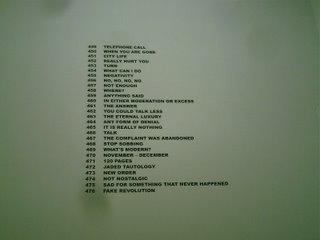I was in Manchester the other week, for the Records Management Society’s Conference.
In a break in the proceedings I visited the Cube (Centre for the Understanding of the Built Environment), to see their exhibition
Found shared: the Magazine Photowork.
There is a good review of the exhibition by
Redeye Editors of Magazine photoworks collect already existing images and collage them together to make a magazine.
They look, feel and smell like convential magazines, but the experience of reading them is different. They do not attempt to inform or entertain you. They do not pretent to be ‘current’. The images inside them have a history, a previous life of their own. But you aren’t told what that previous life is. They are just presented as though those pictures were always meant to be grouped together.
The character of the magazine photoworks depends in part on where the editors get the pictures from:
Ohio finds its pictures in photographic archives, archives of different small societies or organisations. It takes these dull photos that would never see normally see the light of day, from totally unconnected archives, and presents them for you to read into them what you will.
Found is made up of bits of paper, notes and photographs that people have found in the street, or on trains, buses etc, and sent into Found. The Found website has things posted every day that people have sent in, but visually the magazine is more of a treat because of the effort that has gone in to fit all these things together on the pages to look like a magazine.
Permanent food takes their images from glossy magazines, and makes a new magazine out of them all that looks just as glossy, sensational and edgy as the type of magazines the pictures come from.
My favourite thing in the exhibition was a film called Helicopters made by Ohio. The film consisted of a succession of still pictures which happened to contain a helicopter, set to a musical background. In most of the pictures the helicopter was an incidental detail and in some it was just a smudge.
I chose to buy the latest issue of Permanent Food, mainly because on the contents page the section that started on page 73 was entitled ‘Back to the Old House’ (title of an old Smiths song). I have no idea whether the contents page was written by Permanent Food as some sort of commentary on the pictures they have brought together, or whether it was copied from another magazine and collaged into Permanent Food like all the rest of the pages.
 Mongolia
Mongolia


